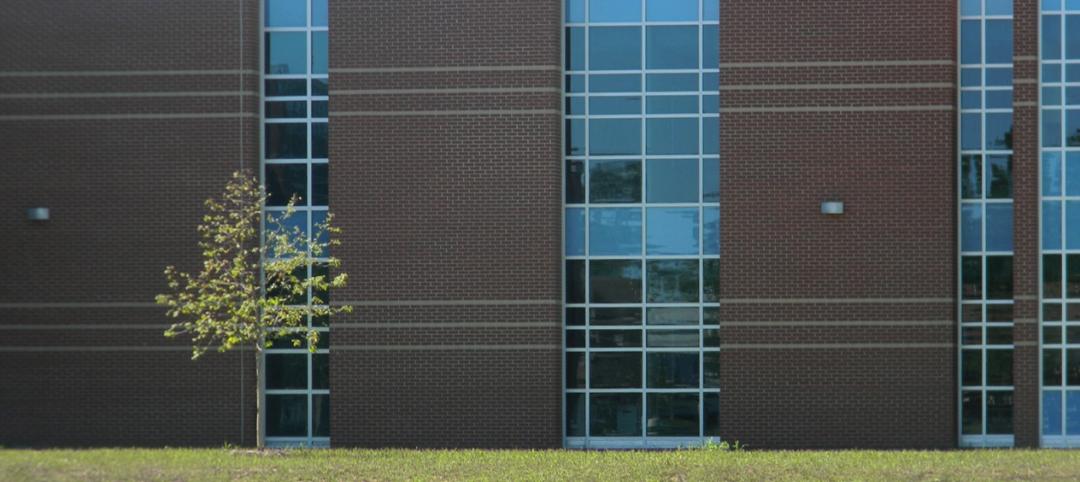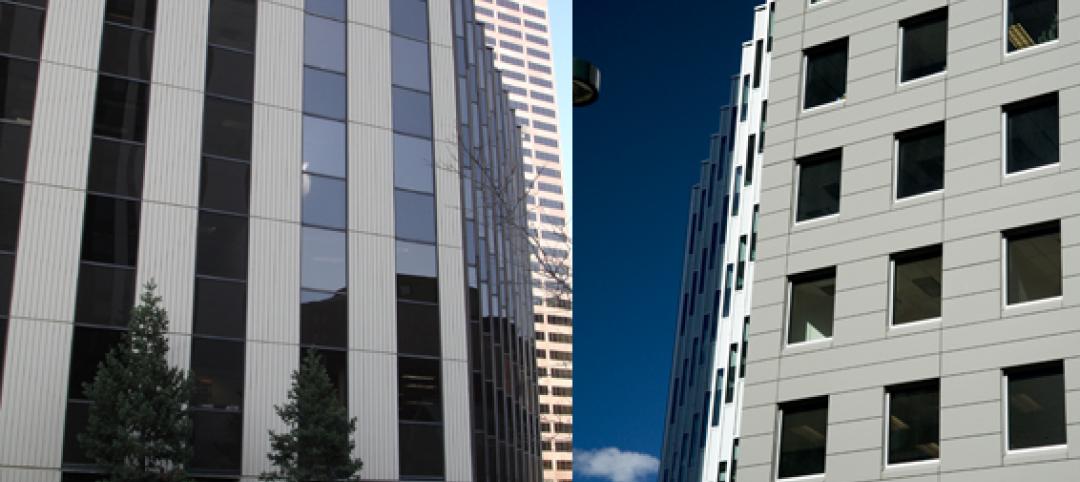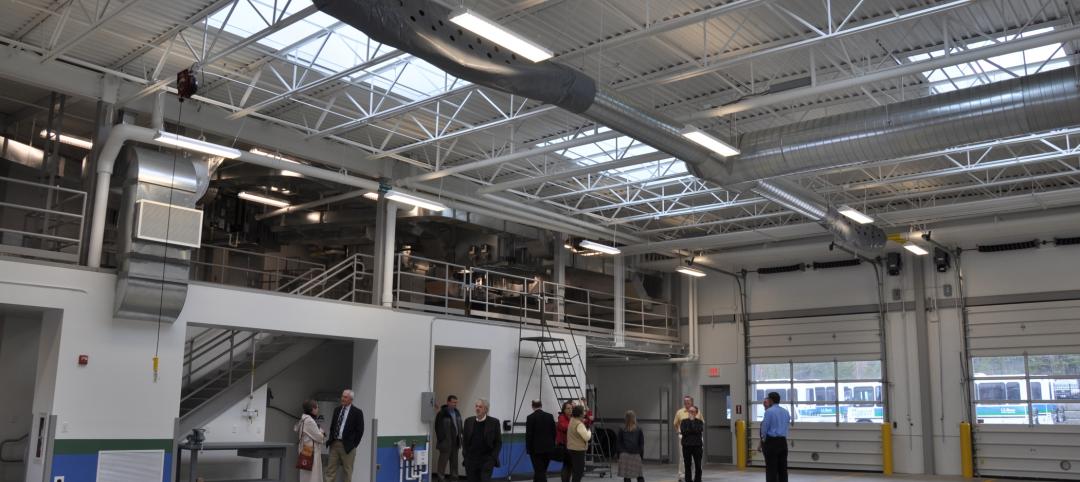 |
| The solar shade of the Art Institute of Chicago’s Modern Wing was designed to collect and redirect natural light from the north and filter out intense southern light. |
Italian architect Renzo Piano refers to his $294 million, 264,000-sf Modern Wing of the Art Institute of Chicago as a “temple of light.” That's all well and good, but how did Piano and the engineers from London-based Arup create an almost entirely naturally lit interior while still protecting the priceless works of art in the Institute's third-floor galleries from dangerous ultraviolet rays?
Piano addressed that concern by hanging a 216-foot-wide “flying carpet” canopy over the glazed roof of the Modern Wing's east building to filter light and eliminate the threat to the art. This sunshield, supported by steel bracings above the museum's third-floor galleries, is composed of thousands of extruded aluminum “blades” precisely angled to collect and redirect natural light from the north and filter out the dangerous and more intense southern light. Additional screening and computer-adjusted electrical lighting achieve the ideal combination of appropriate lighting, reduced electrical expenses, and art preservation. All of this contributed to the Modern Wing, which opened last May, achieving LEED Silver certification.
“This is made easier in a city that is built on precise north-south and east-west axes, perfectly in tune with the cycle of the sun, like a solar machine,” Piano wrote in notes to his original Modern Wing drawings.
 |
| The sprawling sunshade also shields patrons from the sun on the Art Institute’s third-floor, 3,400-sf viewing deck that leads to a bridge to nearby Millennium Park, seen here from the viewing deck. The bridge was also designed by Renzo Piano. |
Robert Lang, lead structural engineer on the project, has been with Arup for 27 years and has spent 20 of those years working with Piano on his projects. He's worked on similar shading and screening devices for Piano's designs of the Los Angeles County Museum of Art, the Lingotto Factory Conversion in Turin, Italy, and the Beyeler Foundation near Basel, Switzerland.
The blades are roughly 13-and-a-half feet long and are situated very crudely at an angle of 45 degrees, says Lang. “They are sculpted and shaped so that they're structurally stable,” he says. “At the low end they're open to the north to allow the indirect northern light in. At the east and west ends they have a series of fins attached to them to catch and block southern light.”
There are more than two thousand small blades on the 46,600-sf “flying carpet,” each supported at two anchor points. The blades were computer-modeled by Arup for maximum energy efficiency and custom fabricated by Sapa RC Profiles in Belgium, which shipped each blade to the site ready for installation. Inside the Modern Wing, a finely calibrated dimming system uses photocells to adjust the supplied lighting to fluctuations in daylighting levels according to time of day, season, and weather. The ceiling and roof of the Modern Wing have two layers of glass and two separate shading systems.
 |
| This sketch by architect Renzo Piano shows how building orientation was used to gather and take advantage of northern light at the Art Institute. |
All of Piano's shading devices share common elements from project to project, but the Art Institute's solar shade had to be specially reinforced to withstand changing temperatures and winds of the city's lakefront. “The climate in Chicago, being as severe as it is, was a concern,” says Lang. “For the force of wind, the blades were designed to withstand movement due to high wind by heavy anchoring in the two positions they were affixed to.” Horizontal directional movement was less than 1.1 inches.
“When it comes to temperature fluctuation, we basically allowed the shade structure to expand and contract due to temperature, always away from the center,” says Lang. “The ends of the roof need to be quite large, and the steelwork was anchored to the support polls and outer walls, one solidly, the other less solidly, to allow for expansion and contraction.”
Each of Piano's Modern Wing flying carpet canopies extends its edge panels out past the last supporting side of the building below to increase the sense of lightness, so the solar shade appears to dissolve at its endpoint. Each roof beam supporting the Art Institute's flying carpet was fabricated offsite and sent to the site as a single piece to be installed.
 |
| This photo of the ceiling of the East Building, taken during construction, shows the rooftop blades without interior shades below the glass roof. |
Inside each beam is a prestressed steel joint that was joined onsite to the lower structure or another beam. Each beam had to be installed in sequence, as the beams make up a web of tolerances that all depend on one another. The intricate web spun by Piano created the desired look of openness and weightlessness.
“I think the story we are telling with the new addition is about accessibility,” Piano wrote in his notes about the addition. “It's about openness. It's about a building that should not be intimidating.”
Related Stories
| Oct 22, 2012
Two-Hour Curtain Wall Lets Light In and Keeps Fire Out at Prairie Hills Junior High School
New school’s south-facing elevation features a glazed aluminum curtain wall that incorporates PPG Solarblue and PPG Solarban 60 glazing.
| Oct 17, 2012
Denver office building makes use of single-component wall system for retrofit
The Building Team selected Centria's Formawall Dimension Series to help achieve the retrofit project's goals of improved aesthetics, sustainability, and energy efficiency.
| Jun 6, 2012
KPF designs tower for Yongsan IBD
The master plan, created by Studio Daniel Libeskind, is a dynamic urban environment containing contributions from 19 different architects practicing in diverse locations around the globe.
| Jun 1, 2012
New BD+C University Course on Insulated Metal Panels available
By completing this course, you earn 1.0 HSW/SD AIA Learning Units.
| May 31, 2012
3 Metal Roofing Case Studies Illustrate Benefits
Metal roofing systems offer values such as longevity, favorable life cycle costs, and heightened aesthetic appeal.
| May 31, 2012
5 military construction trends
Defense spending may be down somewhat, but there’s still plenty of project dollars out there if you know where to look.
| May 29, 2012
Reconstruction Awards Entry Information
Download a PDF of the Entry Information at the bottom of this page.
| May 29, 2012
Thornton Tomasetti/Fore Solutions provides consulting for Phase I of Acadia Gateway Center
Project receives LEED Gold certification.
| May 24, 2012
2012 Reconstruction Awards Entry Form
Download a PDF of the Entry Form at the bottom of this page.













